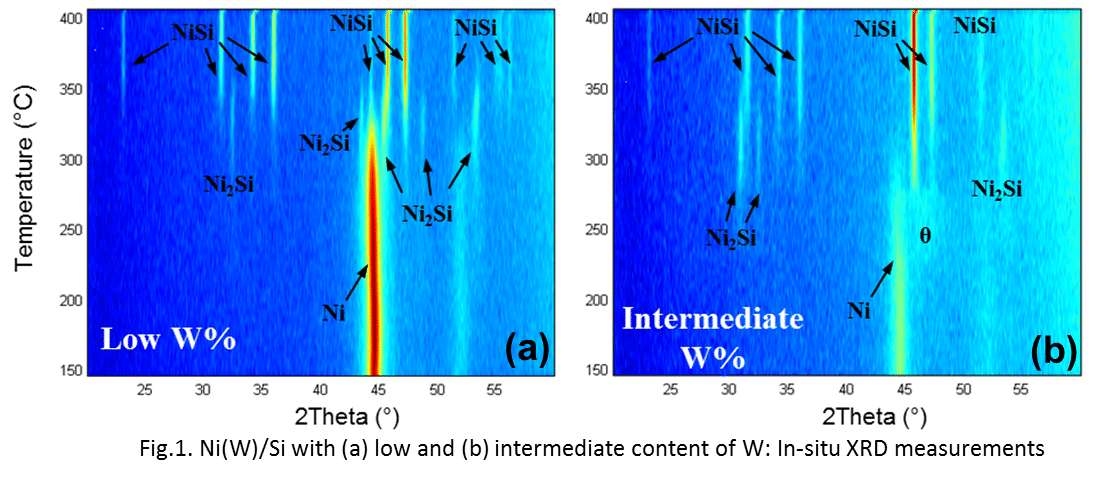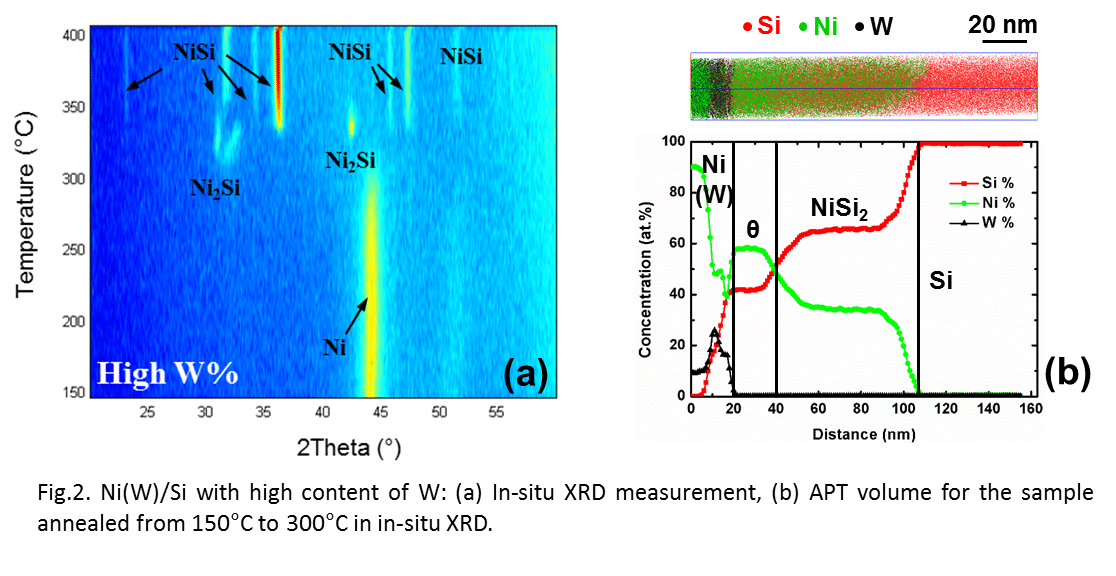Effect of alloying element of W on Ni-silicide formation
2Centre National de la Recherche Scientifique, Aix-Marseille Université, Institut Matériaux Microélectronique Nanosciences de Provence, France
3KTH Royal Institute of Technology, School of Information and Communication Technology (ICT), Sweden
The phase formation of Ni-silicide with varying alloying element of W has been studied through combinatorial method. Co-sputtering of W and Ni on Si(100) was used to prepare samples with gradient in concentration of W and the maximum content is in the range of 10 at.%. The samples were characterized by Rutherford back scattering (RBS), in-situ X-ray diffraction (XRD) and Atom probe tomography (APT). Three groups of silicide formation are distinguished. For low content of W, δ-Ni2Si is formed as the first phase and the formation temperature is increased with the content of W. For intermediate content of W, the first phase is transient phase of θ-Ni2Si and then δ-Ni2Si and NiSi are formed simultaneously. For high content of W, δ-Ni2Si forms earlier than NiSi, rather than the former simultaneous formation. Moreover, APT measurements detect a surprising presence of NiSi2 together with the metal-rich phase of θ-Ni2Si at 300°C which could be relative to W accumulation at the interface of Ni/θ-Ni2Si for samples with high content of W. Layers of W in the middle of Ni layer or at the interface of Ni/Si were used to characterize the effect of the W barrier on the Ni-silicide formation. Modelling and simulation allow a better understanding of this effect.



Powered by Eventact EMS